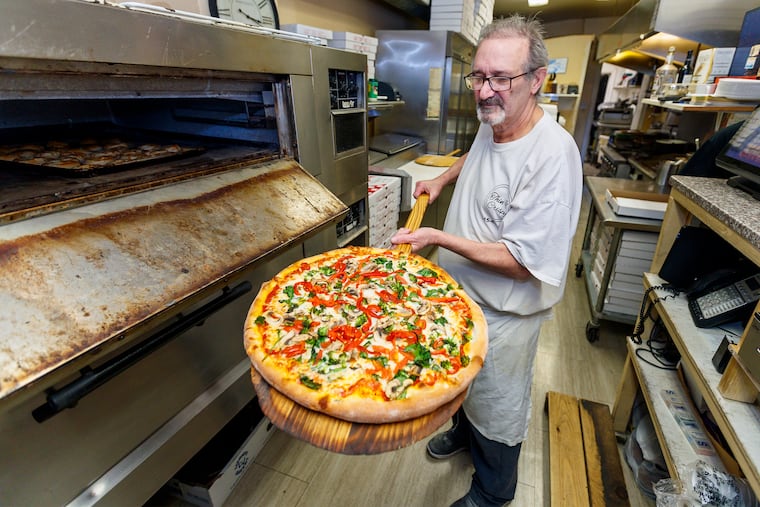Philly mom-and-pop pizzerias see sales surge with online ordering
With digital pizza orders on the rise, more independent shops are feeling pressure to offer an online option. But the steep commissions required by some third-party companies can cut into profits.

Franco Buscemi had no money for advertising when he opened his Kensington pizza shop, Thin & Crispy, in February 2017. But later that year he joined Slice, a website and mobile app designed to steer customers to local, independent pizzerias and away from chains like Domino’s. At first, Buscemi said, he got maybe 60 orders a month through the service. Now, he typically gets close to 400.
“For me, it is the same as advertising,” said Buscemi, who was previously affiliated with Franco’s Pizza in Kensington. “We never send menus to doors. But we keep getting the new customers.”
Digital sales are increasingly replacing phone orders, according to pizza shop owners and industry experts. As a result, many shops feel pressure to join services like GrubHub, Caviar, UberEats, and Slice, even when that means losing a piece of each sale to a commission.
A 2017 report from PMQ Pizza Magazine, an industry publication, noted that 60 percent of Domino’s and Papa John’s sales that year came from digital orders. Though independent pizza shops make up 55 percent of the market nationwide, they drive only 41 percent of sales. The same report noted that 42 percent of all pizzerias didn’t offer online ordering in 2017.
The large chains offer online ordering through their own websites and mobile apps, meaning they don’t have to pay a third party. But many smaller pizza shops with bare-bones websites or no online presence at all don’t have that option.
In the Philadelphia region, many pizza shop owners now acknowledge they were slow to catch on when it came to online ordering. Some said once they did, they saw their sales grow.
Even at Pete’s Famous Pizza at 116 N. 21st St., a Center City fixture for decades, owner Pete Kada said sales are up since the shop went digital.
“It’s definitely more now than it was five years ago,” he said. “We still get a lot of phone calls, but it’s the new customers we get online.”
Buscemi has worked in the pizza business for more than 40 years and is proudly “old school.” He said Slice persuaded him to join by offering to promote his shop at 2563 Trenton Ave. And he prefers Slice’s $1.95 per-order flat-fee commission over platforms like UberEats and GrubHub, which take commissions that can range from 5 percent to 15 percent of sales.
Buscemi has made few concessions to the changing times, opting to receive online orders via a fax machine that spews out pieces of paper. And, like any independent pizza shop owner, he would always prefer a customer order directly via phone. But Slice orders now make up about 40 percent of his overall sales, and he said that for him, the platform has been good for business.
More than 200 pizza shops in Philadelphia are listed on Slice, which was founded in 2010 by Ilir Sela, the son of a Staten Island pizzamaker. So far, its rollout has been in major cities only; it launched in Philadelphia in
summer 2017 and has since driven $25 million in revenue to local pizzerias, said Lena Geiser, a spokeswoman for the company.
Evans Pizza at 4311 Locust St., a West Philly mainstay for 18 years, also has seen its customer base grow with online orders. But Yianna Evans, who owns the shop with her family, said the commissions paid to third-party delivery services often outweigh the benefits.
The shop still gets phone orders from loyal customers, and Evans said the online platforms were particularly helpful when it comes to new residents of the neighborhood, like freshmen at the University of Pennsylvania.
“The big businesses, it might not hurt so much. For us, it increases the sales but takes a lot,” she said. “But we have to have it. Because this generation, they don’t want to talk. No phone calls. They want to use a screen. And if we don’t give them that, another business will."